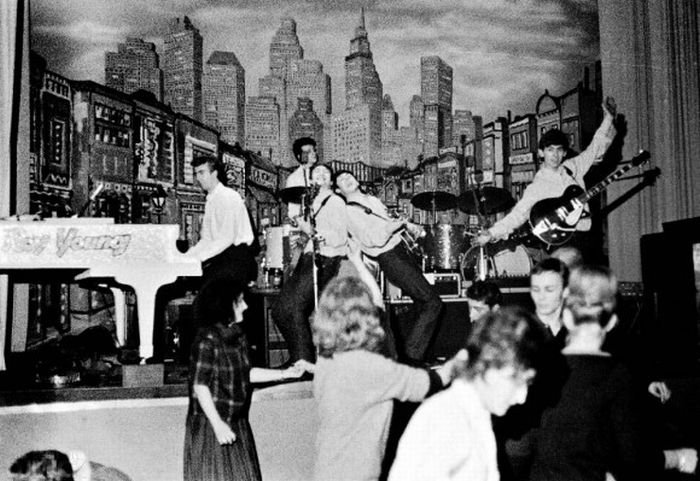|
|
History: Early Years Of The Beatles
|
At the end of the August tour they were introduced to Bob Dylan in New York at the instigation of journalist Al Aronowitz. Visiting the band in their hotel suite, Dylan introduced them to cannabis. Music historian Jonathan Gould points out the musical and cultural significance of this meeting, before which the musicians' respective fanbases were "perceived as inhabiting two separate subcultural worlds": Dylan's core audience of "college kids with artistic or intellectual leanings, a dawning political and social idealism, and a mildly bohemian style" contrasted with The Beatles' core audience of "veritable 'teenyboppers'—kids in high school or grade school whose lives were totally wrapped up in the commercialized popular culture of television, radio, pop records, fan magazines, and teen fashion. They were seen as idolaters, not idealists." Within six months of the meeting, "Lennon would be making records on which he openly imitated Dylan's nasal drone, brittle strum, and introspective vocal persona." Within a year, Dylan would "proceed, with the help of a five-piece group and a Fender Stratocaster electric guitar, to shake the monkey of folk authenticity permanently off his back"; "the distinction between the folk and rock audiences would have nearly evaporated"; and The Beatles' audience would be "showing signs of growing up".
- A Hard Day's Night, Beatles for Sale, Help! and Rubber Soul
Capitol Records' lack of interest throughout 1963 had not gone unnoticed. A competitor, United Artists Records, encouraged United Artists' film division to offer The Beatles a motion picture contract in the hope that it would lead to a record deal. Directed by Richard Lester, A Hard Day's Night had the group's involvement for six weeks in March–April 1964 as they played themselves in a boisterous mock-documentary. The film premiered in London and New York in July and August, respectively, and was an international success. The Observer's reviewer, Penelope Gilliatt, noted that "the way The Beatles go on is just there, and that's it. In an age that is clogged with self-explanation this makes them very welcome. It also makes them naturally comic." According to Allmusic, the accompanying soundtrack album, A Hard Day's Night, saw them "truly coming into their own as a band. All of the disparate influences on their first two albums had coalesced into a bright, joyous, original sound, filled with ringing guitars." That "ringing guitar" sound was primarily the product of Harrison's 12-string electric Rickenbacker, a prototype given him by the manufacturer, which made its debut on the record. Harrison's ringing 12-string inspired Roger McGuinn, who obtained his own Rickenbacker and used it to craft the trademark sound of The Byrds.
Beatles for Sale, the band's fourth studio album, saw the emergence of a serious conflict between commercialism and creativity. Recorded between August and October 1964, the album had been intended to continue the format established by A Hard Day's Night which, unlike the band's first two LPs, had contained no cover versions. Acknowledging the challenge posed by constant international touring to the band's songwriting efforts, Lennon admitted, "Material's becoming a hell of a problem". Six covers from their extensive repertoire were included on the album. Released in early December, its eight self-penned numbers nevertheless stood out, demonstrating the growing maturity of the material produced by the Lennon-McCartney partnership.
|
|









